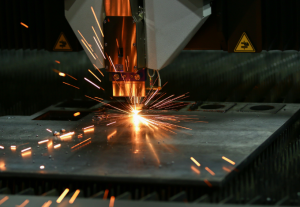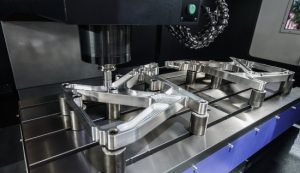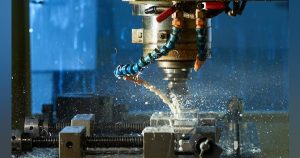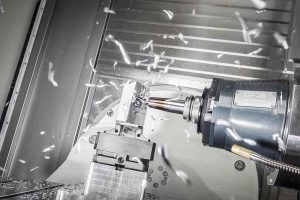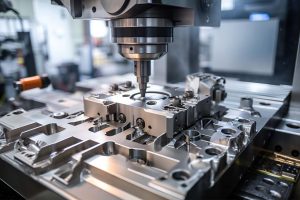The daily cost of operating a CNC machine involves several factors, including electricity consumption, maintenance, and tool wear. These costs are influenced by the type and frequency of machine use and can be reduced through energy-efficient practices and regular maintenance.
Basic Components Of Operating Costs
Power Consumption
Electricity expenditure is a large proportion of operating expenses per day on CNC machines, mainly due to their high power consumption. For a common CNC router that could come out between 3 to 5 kW per hour. At an operational time of 8 hours a day, the machine will consume around 24 to 40 kWh. Let’s say the average industrial electricity rate in your area is around $0.07 per kWh, then we are talking about having to pay between $1.68 and $2.80 a day on electricity costs alone as seen here: This price varies on localized energy costs and the power use specifications of that individual CNC machine model
Maintenance and Repairs
This regular periodical maintenance in addition not only ensures the service life and efficiency of CNC machine tools, but also costs higher expenses (lubricant fees + spare parts fee + professional services charges) [2]. Assume maintenance work (vs scheduled sessions) is $200 a month: roughly $6.67/day But, operational failures or machine breakdowns that creep up without notice can add a tremendous amount to this cost. Whereas kin only have a cost of 1 or $2k when speaking about the replacement of broken spindle motor and price tag on belt replacements, for example, comes at around One hundred dollars. By managing maintenance, you can also reduce the frequency and severity of these repairs which in turn manages those expenses.
Tool Wear and Replacement
The tooling itself is one of the biggest cost-drivers and it depends very much whether we are talking program tools which can be used in a high number or running several thousand (Global AG-1 platform) to low dozen times, like prototype rigs made from carbon-fiber with an epoxy resin process. All tools eventually wear out, and end mills, drill bits, as well as latheing are no different. A solid carbide end mill through a 700 hours of milling aluminum might cost $30 or so. With 18 hours of two shifts per day, only this one tool would need to be replaced every roughly 43 days or so at a cost of about $0.70 per working day. Tool wear with harder materials, such as stainless steel or titanium causes this cost area to rise at an accelerated rate.
Labor Costs
Apparently, labor continues to be a major expenditure in most CNC processes. The skill and wage for skilled labor can vary greatly based on geography, talent constraint etc. In the U.S.A, for example a CNC operator could be paid at an hourly rate of anywhere between $15 to even as high as $30. Meaning, working 8 hour a day you are cost between $120 to $240 per day. When combined with areas where labor costs can be exponentially higher due to increased wages or specialized skills, this emphasis on maximizing labor intensity through training and technical advancement could not matter more.

Calculate Electricity Consumption
Analyzing Power Consumption
In the previous section, you can read how to determine power consumption of a CNC machine (in kilowatts kW). To put this into perspective, a standard CNC router might need between 5 kW for lighter work and up to 15 kW or more in higher-load applications. Multiply the average hour consumption by the hours of machine operation to get daily usage. For instance, if a machine consumes 10 kW on average and is operated for about 8 hours a day then its daily consumption would be around 80 kWh.
Cost Calculation on Local Tariffs
After you calculate total kWh consumed in a day, multiply this by the price of electricity for that region. The cost of electricity generated per day at a rate of $0.10 / kWh = 80kWh / x (machine) => Its use amounted to: daily light ($8.00). Local electricity rates are subject to a lot of variance from location and even time of day, so these numbers should be used very broadly (we also advise checking with your area’s utility for the most accurate figures).
Peak Demand Charges
The cost of electricity for firms may also pertain to peak demand charges (i.e. the maximum amount of power consumed in one 30-minute interval per month) and they will have to be compensated accordingly by themselves too. Large CNC machines, especially those with high horse -power motors can add up to peak demand. This includes knowing how these costs are derived from the charges you can be subjected to and when using your machine may coincide with peak demand, so you can plan for it.
Monitoring and Cutting Down Energy uses
The first part of this process is to install energy monitoring equipment that can provide immediate electricity usage data. For operators this may be in the form of smart meters or energy management systems that they use to actually see what their consumption is versus budget, and can make changes accordingly. For example, if your energy provider has time-of-use rates you could shift high-energy tasks to off-peak hours to save money.
Factors That Affect Daily Operating Costs
Type of CNC Machine
The power consumption, maintenance and durability are mostly decided by what model CNC machine you have as well to how big it is. An industrial-size CNC milling machine would take in 20-25 kW per hour, whereas the energy consumption of a smaller tabletop computer numerical control (CNC) router is approximately 2-5kW. This means the cost of electricity for these machines, may reasonably range anywhere from $1.40-17.50 per day, given an average wiredity price as $0.10/kwh and 8 hours operational time (daily).
Material Being Machined
Material properties that affect machinability include hardness and abrasiveness which impact wear on the cutting tools as well as machine tool power. For example, machining titanium or hardened steels can accelerate tool wear at twice to three times the rate of softer materials such as aluminum. All this extra tool wear results in an overall higher consumption of tools, which can range from $30 per standard carbide end mill to over $200 for specialized cutting tools while drastically increasing daily costs.
Operating Intensity
The faster the speed of machine operation, along with a higher feed rate and deeper depth per cut are all important factors to increase productivity but also plays critical role in elevating daily operating costs. High-intensity operations can add up to 50 per cent more power consumption than standard operations.
Local Electricity Rates
For heavier machines, this could reach $27 or more per day just for the electricity cost of running a CNC machine (e.g., in California where industrial power rates are also high and may be as much as $.15/kWh).
Maintenance Practices
Preventative maintenance $200 per month, would be about $6.67 a day amortized Conversely, poor maintenance-related emergency repairs may result in unscheduled downtime and costs that can skyrocket to as much as tens of thousands depending on the failure type/developments needed.

Reducing Operating Costs
Optimizing Machine Settings
Balancing performance with efficiency Another direct way to manage costs is by balancing physical machine settings. This includes adjusting spindle speed and feed rate to decrease power consumption, as well extend tool life. Through optimization of these settings, a company could potentially lower tooling costs by 15-25%, which translates to roughly $5-$10 per one machine daily operating costs saving (based on average replacement cost of the tools.) So it not only saves costs in the short run but also enhances lifetime of high cost parts.
Preventive maintenance is important
Prevent machine breakdowns and repair costs with scheduled maintenance Since many contract CNC machining companies offer identical services, setbacks that result in lost productivity can be addressed simply by conducting preventative maintenance on the machines at regular intervals — including lubrication of moving parts; periodically checking and adjusting spindle alignment to mitigate tool travel problems within the work bay as well as monitor for runout (run-out) condition or eccentric position where one point circulates around another circle while it is running up its speed throughout cycle plus keep updated software versions when available. That expense for regular maintenance might run about $200 per month if you average it over the entire year, but it would save on repairs that could easily top $3,000 in one breakdown incident. Assuming just one day of the month is saved that could otherwise have been caused due to downtime, this proactive effort would translate into a potential saving (performed daily) might be $100.
From the Experimental Implementer voice
Whether it is by buying new, more energy-efficient models or combining existing machines with retrofitted LED lights, sleep mode settings and efficient motors… the savings in power could be substantial. For a typical 20kWh/day load at $0.10 per kWh, this might be worth ($3 to $6 daily) in electricity cost savings given the VFD can lower energy consumption of an equipment by as much as (-30%)
Training Operators
Operators trained to a higher level know how to run machines better at the right times of day. They can decide which spot jobs need to be run at certain times, how and when the machines handles them better or makes minor adjustments that prevent waste piling up in some areas of wear & tear. Training is an investment that can save $15 to $25 per machine every day from improved operational efficiency and reduced human errors/rework, as stated earlier.



